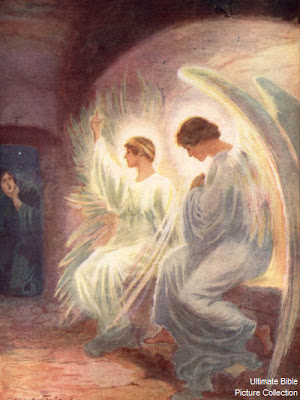| Summer Time at Iceland 31 March 2013 |
Dear Fr. Edward,
Thank you.
Your Poems illuminate the sacred calendar of;
- Easter
- Annunciation.
Wishing you joy and grace for Easter-tide.
fr. Donald
----- Forwarded Message -----
From: edward booth ...
To: Donald ...
From: edward booth ...
To: Donald ...
Sent: Saturday, 30 March 2013, 20:39
Subject: Easter Greetings
Subject: Easter Greetings
Dear Father Donald,
Here are two poems. The first is an Easter Greeting, contrasting the old Pasch of the Jews (crossing the Red Sea with the New Covenant (as announced at the Last Supper, where Jesus referred to the New and Eternal Covenant). The best approximation I could make to this was a mosaic described as being at the Washing of the Feet of the disciples at the Last Supper. On the table (if you use a large magnifying glass you will find elements of the Supper in place. But the washing of the feet has a glance at Moses' (total: cf Peter's reaction) washing of Aaron and his sons as priests, which was an extension of the possibility of the participation through the priesthood of the original Supper.
There is also, by anticipation, a poem on the Annunciation.
H... would be glad to have copies I am sure.
Gaudia Paschalia!
to you and the Community,
fr Edward O.P.
Picture Summer Time Iceland 2013
Pasch of Irrevocable Transition
In scale the Pasch of Jesus in Jerusalem
far exceeded that of the Red Sea – sited entirely by the lowering
of the wind-blown water and its infilling by wind-dropping.
The Paschal Lamb had been eaten before the Crossing.
Sufficiently drying to lure the Egyptian charioteers on to the puddly bottom;
sufficient water to drown them when the water returned with a rush.
At Jerusalem the trial of Jesus was rushed, and Nicodemus' and Joseph's servants
would unwedge the stone of the shrouded Occupant before the sun
passed the blackened sky and the horizon.
The old was only the play of meteora;
the time-scaling of the fulfilment was cosmical, with curving’s reducing the whole
to its rhythmical elliptical orbiting and inclined rotation;
in aspect a reverential presentation, liturgical and heaven-referring;
a measure indivisibly earthly and heavenly.
Yet divine power was working these regulations, awaiting the arrival of a
third Jerusalem day for its suppression of bodilyness, caught up into heavenliness
as even the body was released from space-time dimensions,
disappearing at will,
permitting-the days of sublimated fellowship in Galilee,
with heavenly feeding and the service of the Risen One
from the great bursting net as the fish gave up their watery, sensitive souls
to be eaten in “the peace of the Fish”;
as Jesus (by Luke) rose from the Bethany-side of Kedron,
of a finalising absorbing of all mediate endings
into the passageless non-physical border
where what's this-world dimensioned passes into its most purest beyond.
Fr. Edward OP
Stykkishólmur
Holy Saturday 2013
[notes, “meteora” as Aristotle would have understood it; ill: above: Poussin; below Florence Duomo C13].
From within all perspectives a Blessed Pasch E.B. Stykkishólmur 2013
What
was Announced by the pure, sent Spirit –
A
poem on the Annunciation
Isaiah and his successors
were undeviatingly faithful
to a recurrent wave-series
of power and beauty: crest after crest,
with the promise of continuity of a Presence
that would not be adopted
as a creature becoming Messiah.
Though he was to be a perfect Manhood
embodying the highest Wisdom in all its
articulations,
yet bodywise
subjected to disfiguring, pain-piercing solidarity,
not with
but for
the Earth-dwellers in eschatological
completeness and solidarity.
Extended to all human pastness of penultimately
separated spirits:
all to be united in death-state till reintegration
and judgement,
their spirits receiving the Word-mould of the
eternal Theandric.
It was to be a commerce in fleshliness like any
birth
with the sure establishment of the purest,
perfectest homeliness
“in the flesh”.
With the Divinity not residing within
but the Person united in mind, will and
spirit,
perfect and perfecting till infinitude:
the vital essence was Divine, taking over
the flesh from Theotokos,
and consecrating her endlessly in knowledge and
purity
for timeless Consorting.
The Cretan Archbishop, Andrew saw that
non-generative organs
would have changed their function to parturition:
no need for man-knowing,
only divine seeding as divinely ordering
her mono-zygotic emplacement
in completest acceptance.
Continually
mono-sourced from her body with uniqueness;
a Divine Person remaining in triadic Union of nature
but coded uniquely from her
mono-sourcing only her own human genetic:
Virginal meeting Divine within the shekinah
of glory.
Witnessed by humans
but felt by her as Virginal Mother in a continuity
with She remaining what she was,
with the Son as her Son unbounded in quality,
and She with permanence within though transcending
heaven's hierarchical dynamic positing.
Difference-making in her as instantly recreating and
deifying.
Yet from the overflowing abundance of timeless
creative generosity
her theandric Son was made
for himself and for viewing humanity
most like her in bodily frame and features,
save physical womanhood.
Yet in highest oneness in mind, desire and willing
and so physically viewable, with even self-feelable
features,
complementary in alignment of looks
even more so in graspings of mind and spirit and
love
to him as timeless Source, with intensity
growing and harvesting continually till judgement is
passed universally,
from that unique Moment of timeless expansion,
never decreasing in state and in consequences
as the Purest Spirit, bursting out its message,
excrescing now its wave-harvesting drives,
singly and timelessly achieves
from the
principative total-as-multiple adoptings,
in union with each one,
caught up into the universally enfolding Divinity.
Fr. Edward, O.P.
Stykkishólmur
22 March (Good
Friday) 2013








